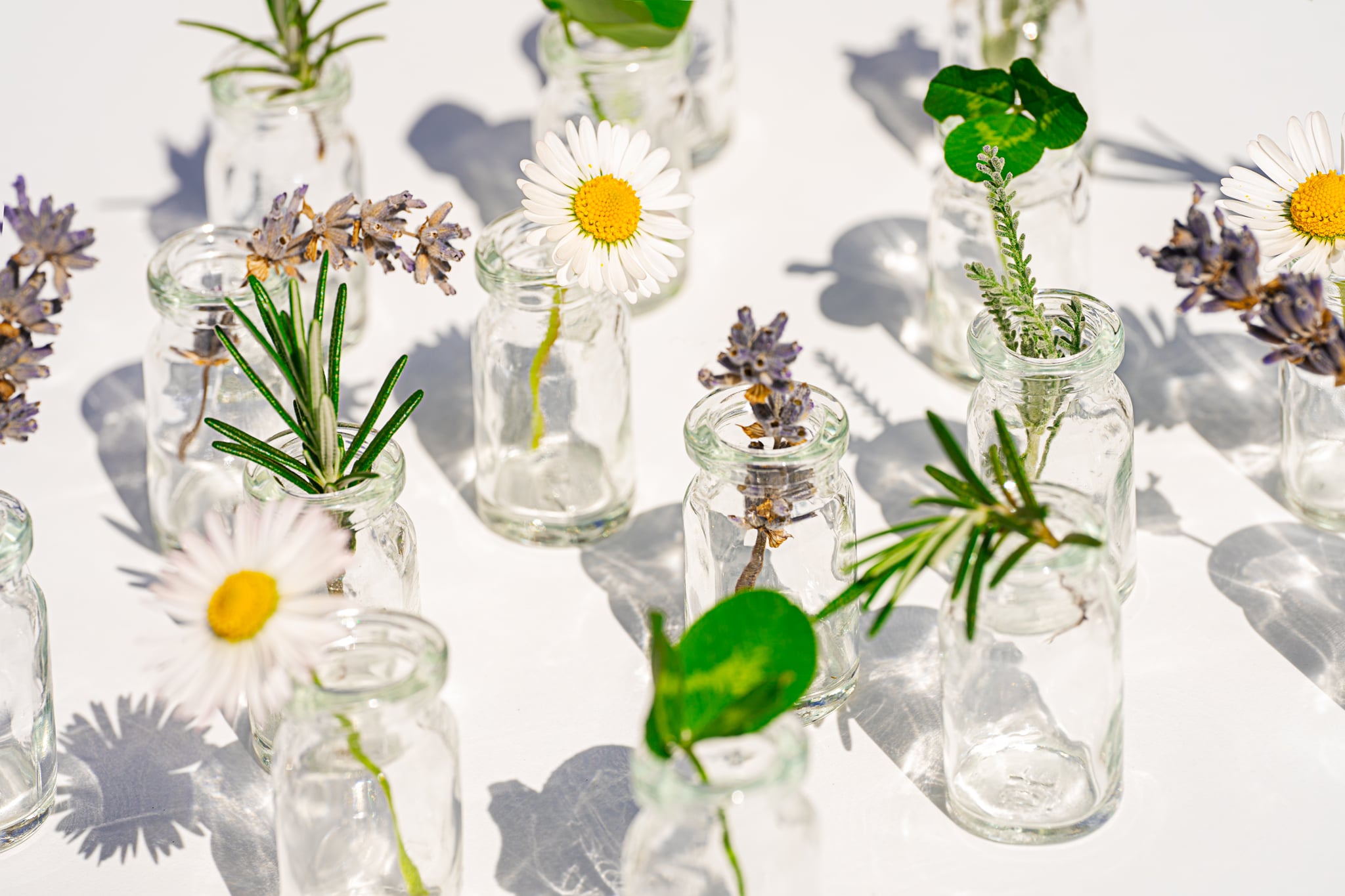
- There has been a recent uptick in biotech beauty brands.
- They utilize biotechnology to create lab-made versions of ingredients you’d commonly find in nature.
- It intersects nature and science for a more sustainable alternative.
The beauty industry is always advancing. Cosmetic chemists and brands are constantly innovating, not only to create new products but to also come up with new ways of formulating those products, too. Biotech beauty is a great example of that. In recent years, you’ve probably seen an uptick in brands calling themselves a “biotech beauty brand” or using “biotechnology” in their products — but what does that mean?
“Biotech beauty refers to ingredients that are created using biotechnology, a science that uses living organisms, such as bacteria or microalgae, as powerhouses to produce a product of interest,” Nick Dindio, cosmetic chemist from SOS Beauty Group, tells POPSUGAR.
To put it simply, biotech beauty uses ingredients created in a lab to fuel its skin-care formulations as a more sustainable alternative to natural ingredients. (Think of lab-grown diamonds versus diamonds that have been mined.) This new wave of beauty manufacturing fuses the best of both worlds — science and nature — and has a long list of benefits.
To further break down more about biotechnology in the beauty industry, keep reading for everything you need to know about the trend, from how it works to the environmental impact.
What Is Biotech Beauty?
Biotech beauty fuses together science and nature for a more sustainable, effective solution. “Biotech beauty is the merging of biology and technology, harnessing biological processes to create and produce high performance and more sustainable materials and ingredients that are valuable for beauty products,” says Tammy Yaiser, the vice president of product development at Algenist, a biotech skin-care brand. “Biotech uses biological processes and microorganisms such as algae, enzymes, bacteria, and yeast to become manufacturing plants to create and produce regenerative ingredients.”
Biotechnology isn’t unique to beauty — it’s historically been used in medicine and is responsible for a myriad of solutions to common health problems, such as infertility and cardiovascular disease. In beauty, however, the “use of these technologies allows us to develop superior ingredients and molecules to use in skin-care and cosmetic products for demonstrable results,” says Lauren Otsuki, co-founder, executive vice president, and chief innovation officer of biotech skin-care brand, Ourself.
You might think biotech beauty overlaps with “clean” and “green” beauty, but it’s a separate entity in and of itself. Rather than using actual ingredients from nature, which is what all-natural, clean and green beauty focuses on, they’re using those ingredients as a model to recreate an alternative solution in a lab.
How Does Biotech Beauty Work?
The term biotech beauty encompasses different technologies and every company does it a little differently, but the process goes a little something like this: “In general, biotech beauty companies will grow a microorganism in controlled conditions and can manipulate the organism to produce a molecule or blend of molecules,” says Dindio.
Otsuki adds that the process involves “creating and developing materials tailored for specific applications and performance, making them through more sustainable processes, and producing them in a controlled environment allowing for higher reliability, purity, and quality,” she says.
Beauty Ingredients Made With Biotechnology
Biotechnology can be used to create a variety of skin-care ingredients, including hyaluronic acid, collagen, natural preservatives, and even fragrances. “Some notable ones are ferments, emollients, and active ingredients,” says Dindio. “This category is expanding rapidly.” It’s especially useful for creating vegan alternatives for ingredients that traditionally would only be found in plants and animals.
“Biotechnology enables the development of various types of ingredients through fermentation and synthesis, such as analogs of animal-derived ingredients (hyaluronic acid and collagen), peptides, or other small molecules,” says Otsuki. “These ingredients may mimic naturally occurring proteins or compounds in the skin that are important in improving skin tone and pigmentation, loss of skin elasticity, pore size, and other signs of aging.”
Another great example of biotech beauty at work is natural preservatives. Preservatives are essential to ensure products don’t go bad before we even get the chance to use them, but as of late, they’ve gotten a bad reputation and the use of artificial preservatives has been a pain point for many brands striving to go “all-natural.” “An example of biotech beauty is using the process of fruit and vegetable fermentation to create natural preservatives,” says Elina Fedotova, celebrity esthetician, cosmetic chemist, and founder and chief formulator of Elina Organics. “We can now use technology to create preservatives from nature.”
The Environmental Benefit of Biotech Beauty
Not only does biotech beauty produce innovative, efficacious ingredients that can address a variety of skin-care concerns, but it’s good for the environment, too. “Using biotechnology to develop skin-care products means that we are producing ingredients in a lab, and aren’t sourcing them from scarce natural sources such as plants and animals,” says Otsuki.
Yaiser adds: “Many traditional ingredients used in beauty require a significant amount of precious natural resources such as land, water, and energy to produce them. Biotech beauty allows for materials that are more sustainable and at its next level, regenerative – allowing for clean, safe, naturally-derived high-purity ingredients that at the same time reduce negative impacts on the environment.” This helps reduce a company’s carbon footprint and when formulating internally, lowers the risk of external supply chain issues holding things up.
“This biotech beauty trend is amazing because it is truly an intersection of sustainability, technology, and efficacy,” says Dindio.
Source: Read Full Article
